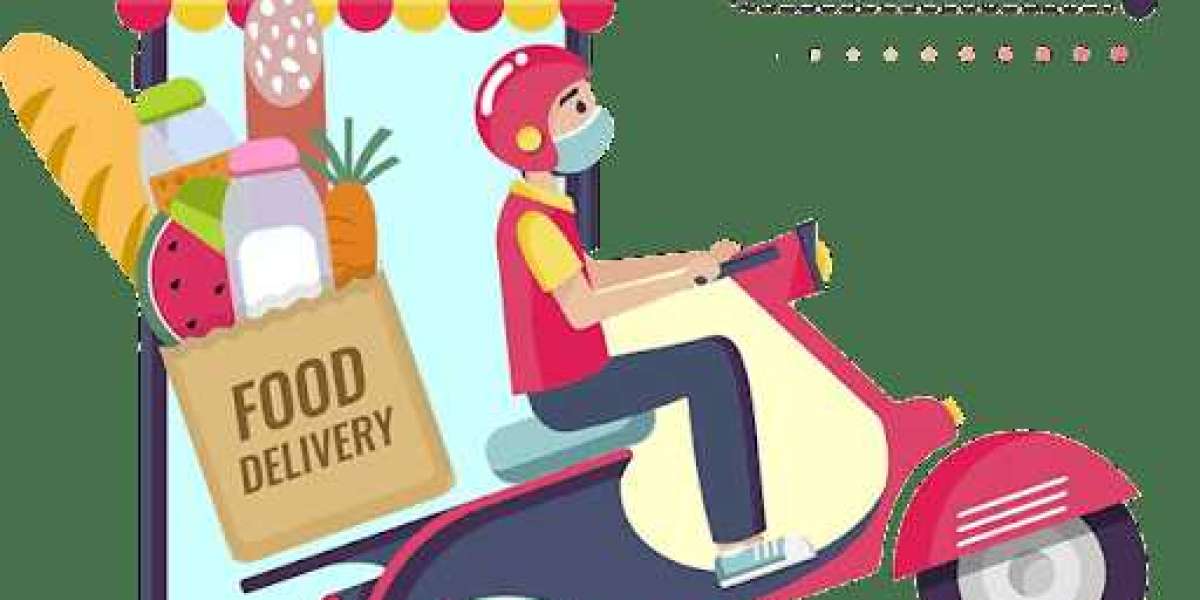In today's fast-paced world, food delivery apps have become an essential service, offering convenience, variety, and accessibility to consumers. Developing a food delivery app involves a multi-faceted approach, integrating advanced technologies, user-friendly designs, and robust backend systems. This guide outlines the critical aspects of food delivery app development, covering essential features, technology stack, development process, and key considerations.
#### Essential Features of a Food Delivery App
A successful food delivery app development must cater to the needs of three primary user groups: customers, restaurants, and delivery personnel. Here are the key features for each group:
##### For Customers:
1. **User Registration and Profile Management**: Simplified sign-up/sign-in with options like social media integration.
2. **Restaurant Listings**: Detailed listings with filters for cuisine, ratings, pricing, and delivery times.
3. **Order Placement**: Intuitive interface for easy order placement and customization.
4. **Payment Gateway Integration**: Secure payment methods, including credit/debit cards, mobile wallets, and cash on delivery.
5. **Order Tracking**: Real-time tracking of orders from preparation to delivery.
6. **Reviews and Ratings**: System for users to rate and review restaurants and delivery services.
7. **Notifications**: Push notifications for order confirmations, updates, and promotions.
8. **Customer Support**: In-app chat or call support for resolving queries.
##### For Restaurants:
1. **Dashboard**: Comprehensive dashboard for managing orders, menus, pricing, and promotions.
2. **Order Management**: Real-time order notifications and management tools.
3. **Analytics**: Insights into sales, popular items, and customer preferences.
4. **Customer Feedback**: Access to reviews and ratings to improve service.
##### For Delivery Personnel:
1. **Registration and Profile**: Easy sign-up process with verification.
2. **Order Management**: Tools to view and manage assigned orders.
3. **Navigation**: Integrated GPS for optimized delivery routes.
4. **Earnings and Performance**: Track earnings, bonuses, and performance metrics.
5. **Notifications**: Real-time updates on order assignments and changes.
#### Technology Stack
Choosing the right technology stack is crucial for the app's performance, scalability, and security.
##### Front-end:
- **iOS**: Swift
- **Android**: Kotlin
- **Cross-Platform**: React Native, Flutter
##### Back-end:
- **Programming Languages**: Node.js, Ruby on Rails, Python (Django)
- **Database**: PostgreSQL, MongoDB, MySQL
- **Cloud Services**: AWS, Google Cloud, Microsoft Azure
##### Other Technologies:
- **Payment Gateways**: Stripe, PayPal, Braintree
- **Push Notifications**: Firebase Cloud Messaging (FCM), Apple Push Notification Service (APNs)
- **Real-Time Updates**: Socket.io, Pusher
- **Geolocation**: Google Maps API, Mapbox
#### Development Process
Developing a food delivery app involves several key stages:
##### 1. Market Research and Planning
Conduct comprehensive market research to understand the target audience, analyze competitors, and identify market trends. Define the app’s unique selling proposition (USP) and create a detailed project plan.
##### 2. UI/UX Design
Design an attractive and intuitive user interface. Focus on seamless navigation, appealing visuals, and an engaging user experience.
##### 3. Development
Develop the app using the chosen technology stack. This stage includes front-end and back-end development, database setup, and integration of third-party services like payment gateways and geolocation APIs.
##### 4. Testing
Perform extensive testing to identify and fix bugs. Ensure the app is secure, stable, and performs well under various conditions. Testing should include functionality, usability, performance, and security checks.
##### 5. Deployment
Deploy the app on the respective app stores (Apple App Store, Google Play Store) and ensure compliance with their guidelines.
##### 6. Marketing and Launch
Develop and execute a marketing strategy to promote the app. Utilize social media, influencer marketing, and digital advertising to reach a wide audience.
##### 7. Maintenance and Updates
Regularly update the app to fix bugs, add new features, and enhance performance. Collect user feedback and continuously improve the app based on this input.
#### Key Considerations
##### 1. Scalability
Ensure the app can handle an increasing number of users and orders without compromising performance.
##### 2. Security
Implement robust security measures to protect user data, including encryption, secure payment processing, and compliance with data protection regulations.
##### 3. User Experience
Prioritize a seamless user experience by making the app intuitive and easy to navigate. Regularly gather user feedback and make necessary improvements.
##### 4. Partnerships with Restaurants
Establish strong partnerships with a variety of restaurants to offer users a wide range of choices. Negotiate mutually beneficial terms to ensure a sustainable business model.
##### 5. Legal and Regulatory Compliance
Ensure the app complies with local laws and regulations, including food safety, data protection, and delivery policies.
### Conclusion
Food delivery app development is a complex but rewarding process. By focusing on essential features, selecting the appropriate technology stack, and following a structured development process, you can create a successful app that meets the needs of customers, restaurants, and delivery personnel. Continuous improvement and adaptation to market trends are crucial for the long-term success of your food delivery app.



